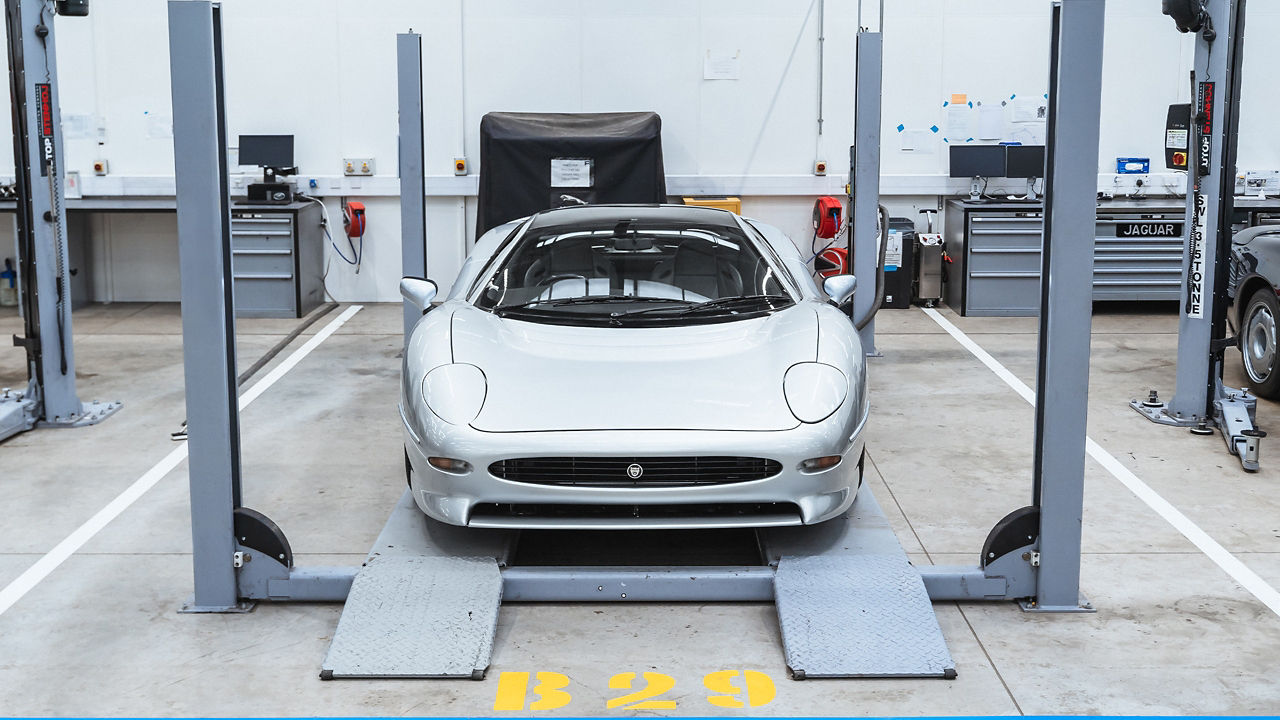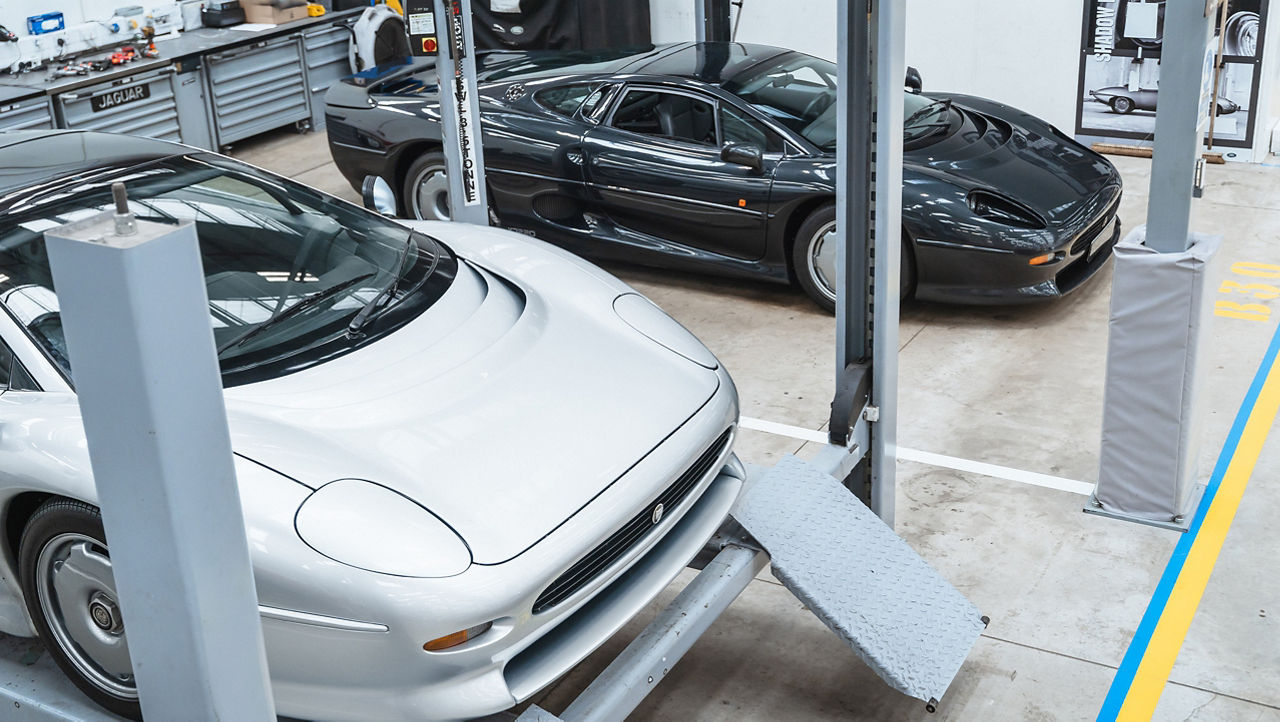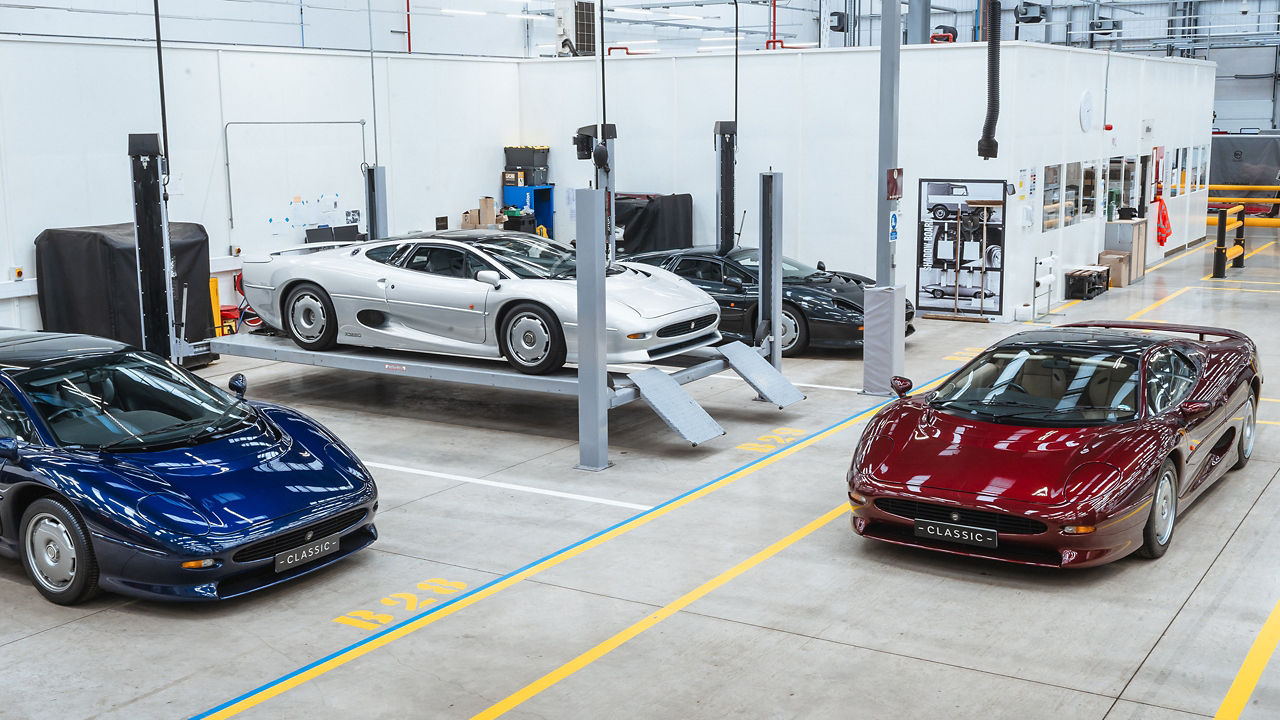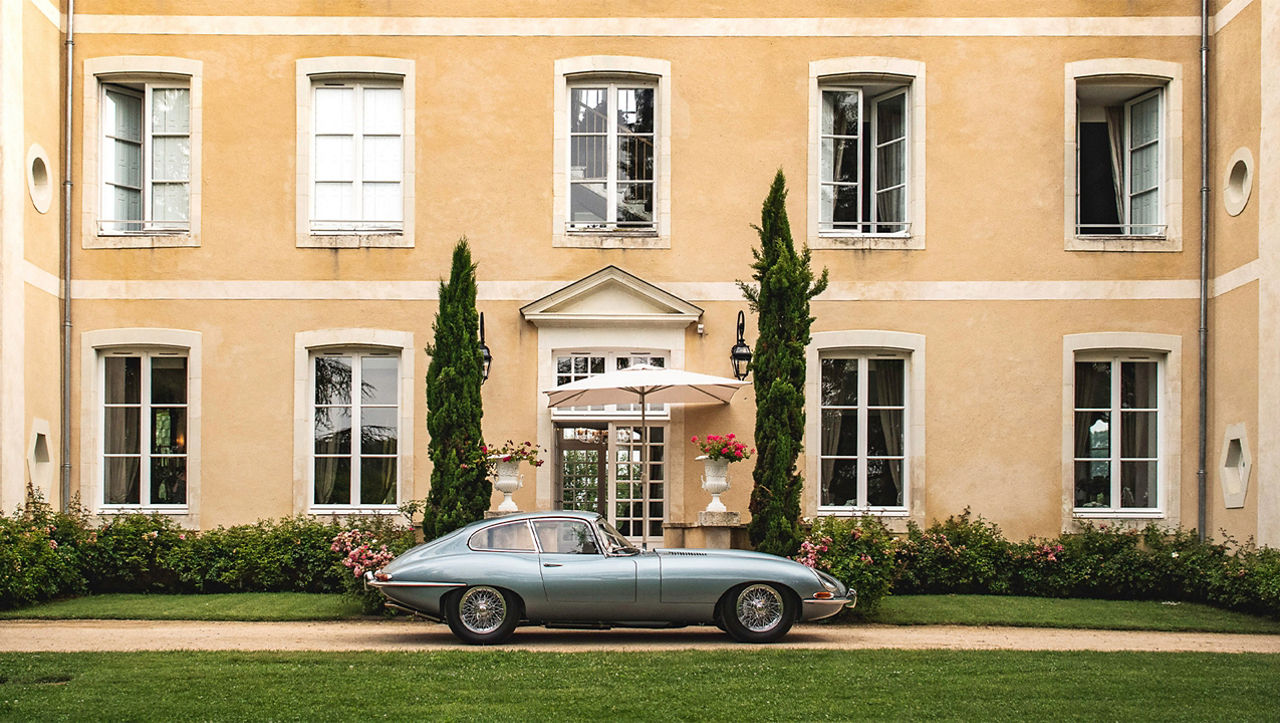From advanced aerodynamics, lightweight aluminium construction, revolutionary disc brakes (which helped Jaguar win the Le Mans 24-hour race in 1953) and extravagantly bold design, Jaguar’s vehicles have always been desirable, the brand a byword for boldness and forward thinking.
Jaguars have always been a copy of nothing. Little wonder that Enzo Ferrari called the E-Type “the most beautiful car ever made”.
Excitement and performance have always been important to Jaguar. In 1948, the new XK120 was the world’s fastest car, with its name a reference to its top speed, 120mph. The E-Type, launched in 1961, was capable of an astonishing 150mph.
Jaguar launched a new ‘fastest car in the world’ in 1992, with its 217.1mph certified by the Guiness Book of World Records as the fastest official speed ever achieved by a production road car. This was acheived at the Nardo proving ground in southern Italy, driven by F1 ace and 1990 Jaguar Le Mans winner Martin Brundle, now better known as an F1 commentator. As a strictly limited-edition car, only 282 XJ220s were built. They remain a familiar sight at Jaguar Classic in Coventry, where they are serviced and – if necessary – repaired and restored by a team of skilled technicians. Jaguar is unusual in having an in-house department devoted to looking after its world-renowned historic vehicles.
That’s where you’ll find Chris Madden, who now specialises in servicing XJ220s. Working at Jaguar’s historic factory in Browns Lane, Chris began servicing XJ220s in 1994. “Thirty years on, I’m still servicing XJ220s,” he says. Celebrity customers include Elton John and Rod Stewart. Jaguar sports cars have a long history of appealing to stars; Clark Gable, Humphrey Bogart and Gary Cooper all drove an XK120 while Steve McQueen, Brigitte Bardot, Frank Sinatra and George Harrison favoured the E-Type.
There were four XJ220s in Jaguar Classic’s workshop when we spoke to Chris. “They need servicing every 12 months which takes about 12 hours. Every six years, they need a new fuel cell, so that’s a big service. They’re motorsport-style bladder fuel tanks.”
Three technicians currently look after XJ220s at Classic, including final-year apprentice James Barrett. “I wanted to work for Classic because I’ve always been into classic cars cars and have some projects of my own.” He owns a Land Rover Series II classic cars and have some projects of my own.” He owns a Land Rover Series II and a Series III, both of which he is restoring.
At 20, the XJ220 is more than 10 years older than James. “I saw one on a Top Gear episode. Plus, all car enthusiasts know what the fastest cars in the world were – so that also made me familiar with the XJ220.”
As James says, “People come to Classic because we’re the OEM. We built the cars so we’re the best people to work on them. On XJ220, we also have all the correct tools. That gives great customer assurance. And Chris is an expert with 30 years’ experience. He is a fantastic tutor.”
All parts are sourced by Jaguar Classic or Land Rover Classic. Many use new tooling from new suppliers – including the XJ220’s F1-style fuel tank. “There are no problems with parts” notes Chris. Jaguar and Land Rover Classic can source parts for any historic Jaguar or Land Rover.
Chris has worked at JLR for 45 years. He began at the Standard Triumph plant in Canley, Coventry, then soon switched to Jaguar at Browns Lane, a 14,000sqm state-of-the-art facility dedicated to looking after classic Jaguar and Land Rover vehicles.. “I moved into service and have done it ever since. I relocated to Classic when it opened.”
Chris first drove the XJ220 on pre-delivery inspections before they went to customers, back when they were new in the early 90s. ‘We took them to the Bruntingthorpe proving ground in Leicestershire. We did three or four laps and did 170 or 180mph just to make sure they performed like an XJ220 should.”
James is still looking forward to his first drive behind the wheel of an XJ220.




